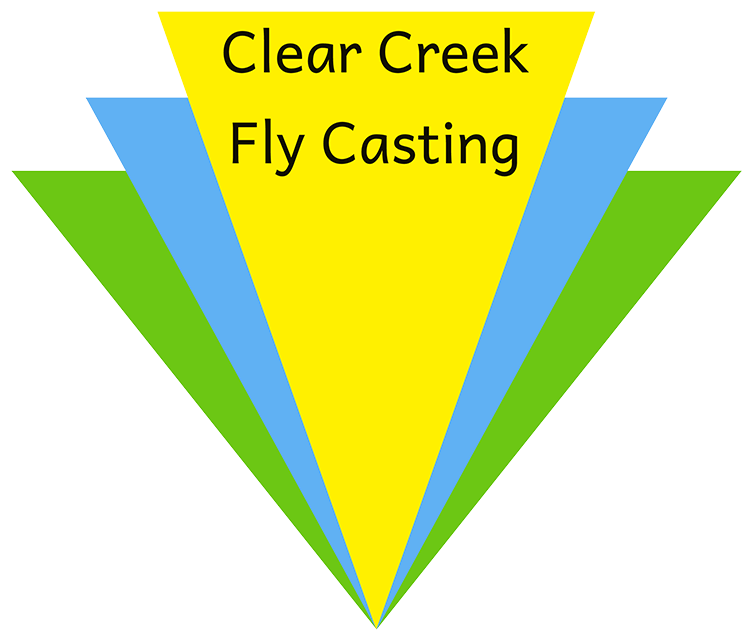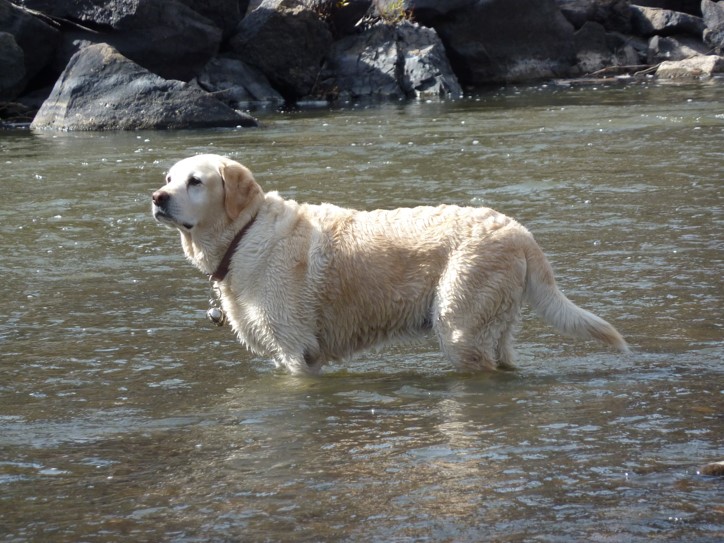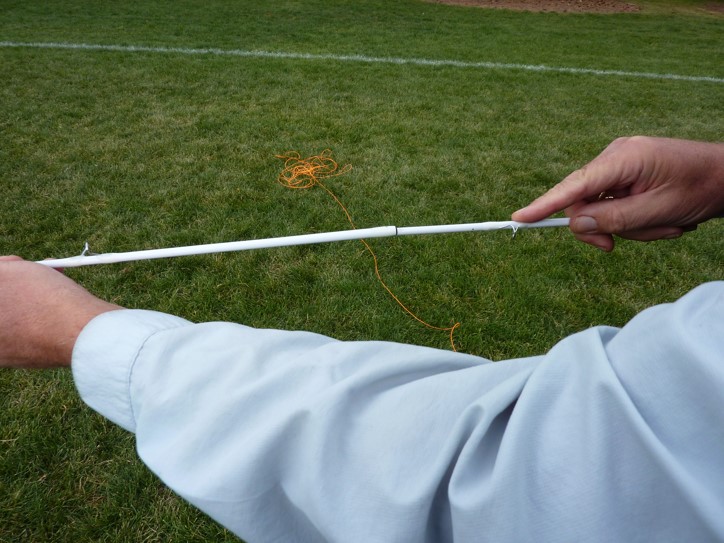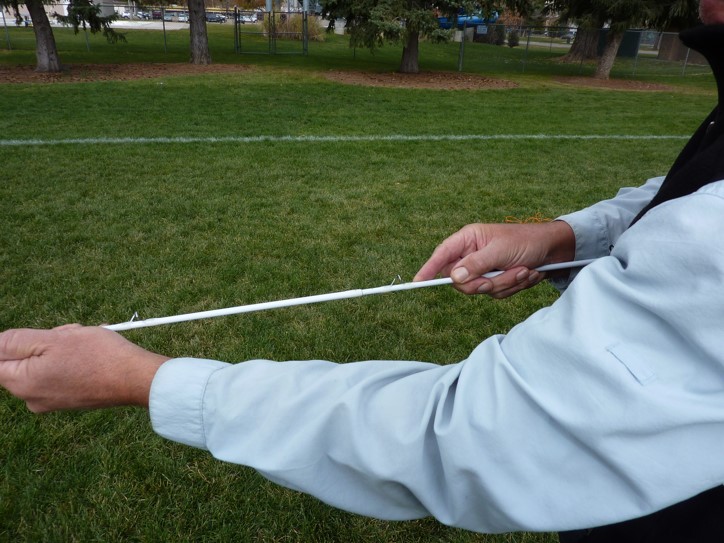

Happy Spring, everyone! The warmer temperatures have been here a while, but I continued skiing, woodcarving and teaching casting. My first fishing day was earlier this week on Clear Creek and went well. I’m looking forward to more days on the river and the early season hatches. I wish all of you a great season to come!

This newsletter is dedicated to the memory of our beloved Yellow Lab, Brook. She passed suddenly of cancer in late January. She was a lover, not a fighter, and therefore a great family member. When fishing, she had an air of steady concentration as I prospected for “water squirrels” (trout) and loved attempting to help me land them. She is and will be missed tremendously, and I feel privileged to have been her “Dad.”
On a lighter note, please enjoy the newsletter! Please send in your questions and suggestions---the newsletter is for you after all! Please note and take advantage of upcoming events and group lessons that are a great value. Better yet, schedule a private lesson or put a group together and set up a lesson with a topic of your choosing!
UPCOMING EVENTS AND INFORMATION
Casting Clinics at Anglers All; 5/13 and 6/10 from 10 am-12:30 pm: Due to frequent requests for distance and double haul instruction, this is the topic for both clinics at Anglers All this season. $50 gets you focused instruction, casting practice drills, more distance and control. Improving your distance cast improves all of your casting! Sign up by calling Anglers All at 303-794-1104.
Casting Clinics at Charlie’s Fly Box; 1:30-3:30 pm on 4/8, 5/13, 6/10, 7/15, 8/12: 2 hours of casting instruction for $50. A great value! Come to learn about the topic of the day or bring your own questions/problems and get answers! Sign up by calling Charlie’s at 303-403-8880.
Fly Fishing Rendezvous: I have again been invited to demonstrate and teach at the Rendezvous this year at the Jeffco Fairgrounds on 5/20 and 21st as part of the team for Fly Fishers International. I hope to see you there for this great event! www.flyfishingrendezvous.com
QUESTIONS AND SUGGESTION BOX
Please contact me with any questions regarding casting and any other aspect of fly fishing. If I don’t feel I can give you an expert answer, I’ll find someone who can! Also, if you have suggestions for articles for this newsletter or topics for demonstration or instruction, let me know. Contact me at jonathan@clearcreekflycasting.com
DISTANCE AND DOUBLE HAUL
Learning to cast longer distance is fun and worthwhile! It improves casting skills at all distances. Yet some of you upon seeing this title are disappointed because “I never make long casts.” I beg everyone to keep reading as these skills will improve all of your casting.
I realize I’ve left out the “how-to” part of this. For that you really need a lesson. There is a rare video or 2 on the internet, but most that I’ve seen are of poor technical or performance quality. Videos on the internet cannot give you feedback, help you make corrections or help you get the feeling of a good cast! The cost of a 1 hour lesson with me is $50---a great value when you consider the cost of most fly fishing stuff these days! You can learn practice drills that really make a difference and get direction from an experienced instructor for not much money!
ASK THE INSTRUCTOR
How did you know the ferrules on my rod were loose?
So, I recently cast a rod a client brought to a lesson. Something didn’t feel right on the first cast. There was a sort of “hinging” sensation. My senses were then heightened, especially since I’ve cast the exact rod and line before and something was different. With only one more cast, I could feel it: besides the odd hinging sensation I could feel a “click-click” in my hand. One click occurred on the back cast and one on the forward cast. Inspection of the rod revealed that the middle ferrule was indeed loose. Proper assembly cured the problem.
This raises the question of how to put the rod together. First, make sure the ferrules are clean. Some fly fishers swear by waxing the ferrules---I’m not one of them. I always worry about the wax picking up dirt and simply haven’t found a need for it with today’s rods. Second, align the male and female ferrules so that the guides on one section are at 90 degrees to the other. As you push the ferrules together, turn the guides into alignment. You will feel the pieces seat as you do so. In the photos note that my right index finger is on top of the rod in the left picture and on the side of the rod in the right picture because the rod piece was rotated as I seated the ferrule.


Check the guides for alignment and adjust. That’s it! Disassembly is simply the opposite, with a warning not to wiggle the pieces apart or push/pull on the guides to make to help get the rod apart! Pull along the axis of the rod only and twist. Wiggling will loosen and damage the ferrule and using the guides for leverage will weaken or misshape them.
One other note is that it’s a good idea to check your ferrules throughout the day, especially if you are roll casting a lot. Nothing is more disappointing than hearing the ferrule crack while casting or fighting a fish because it was loose! Don’t ask me how I know that!
When should I change the leader?
There are multiple answers to this question depending on the situation, but the question came up in the context of a client that came to a lesson with 3 feet of the original manufactured tapered leader left on the end of the fly line. Clearly this needed changing. I recommend changing the leader when 2 feet or more has been cut away. Most manufactured leaders have 18-24” of tippet at the end. Above the tippet is the leader taper which determines behavior of the leader. Unless you know how to re-build the leader and have the material to do so, you’ll be disappointed with how the leader behaves once the tippet is gone. It’s easier just to change it. (But please don’t leave the monofilament streamside---it kills wildlife!)
If you are interested in leader design, tapers, or just want my recommendation about what to purchase for easy leader/tippet management, please contact me!
Looking for past newsletters? Here you go: